Imagine being dressed in a down parka, ski goggles, thick gloves, plastic boots, crampons (spikes under your boots) and barely being able to stand on your own two feet because 90 kph winds are attempting to blow you off the side of a 17, 000-foot ridge. In that moment, you feel as though life is unfolding at 120 frames per second.
Your teammates, who are unrecognizable other than by the color of their jackets, are simply trying to survive and make it to the summit. As a filmmaker, you have half the level of oxygen that you would at sea level which hinders your ability to think and move. Snow is blowing in all directions and your job is to operate a Canon 5D and capture every exciting moment.
In the midst of the chaos of trying to determine whether to carry on or turn back, all of a sudden your Canon 24-70 mm lens hood goes flying off the side of the mountain and disappears somewhere beneath the clouds. You freeze and think, "This is insane!"
Then you quickly make a decision and point your camera in the direction of the next dramatic moment.
"Think 'story' Saikaly, and make sure you get all the pieces you need for the final edit. And don't die in the process!"
That is the dialogue I often have with myself at high altitude. This is the nature of my job as a high altitude filmmaker.
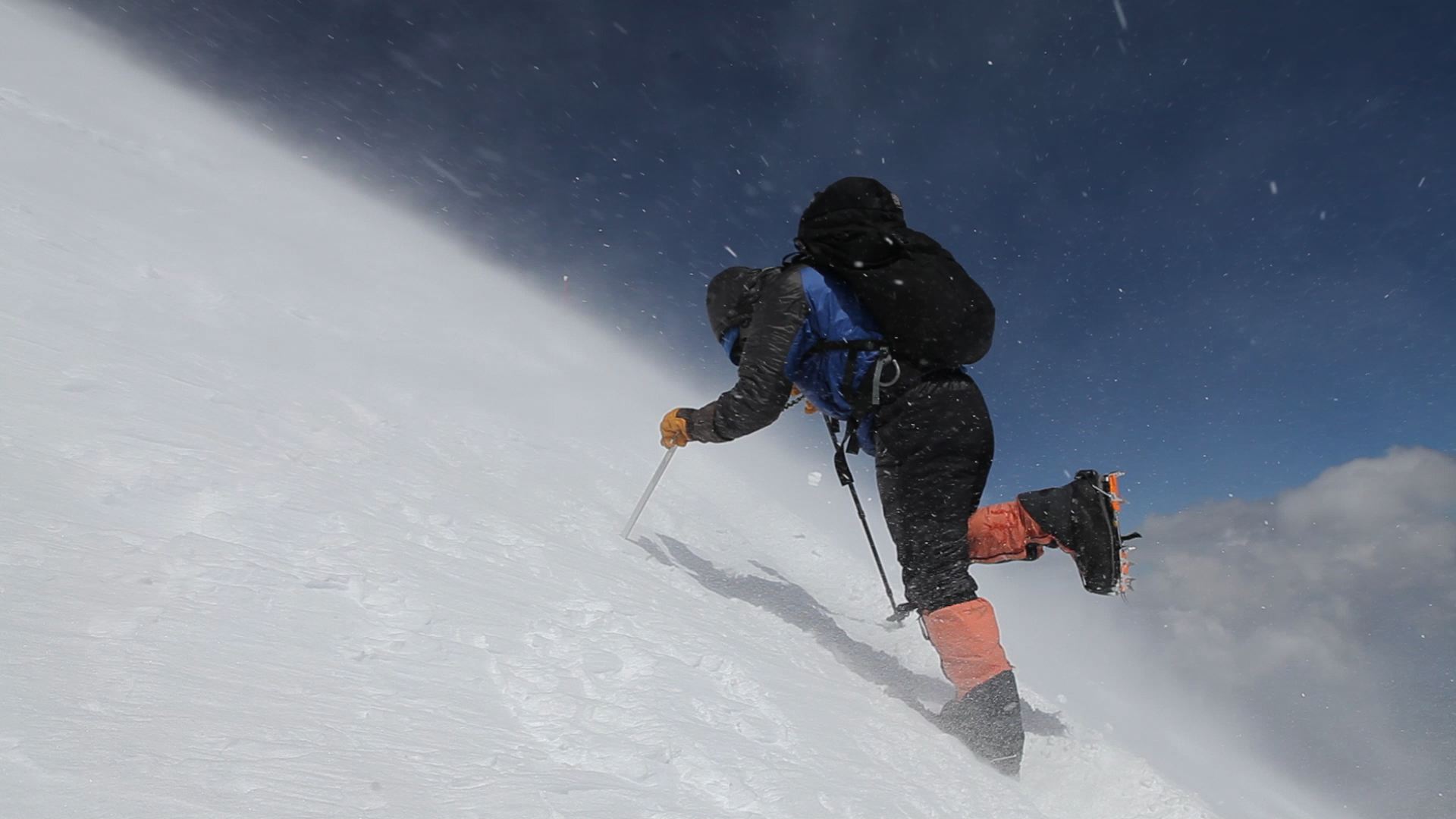
The greatest challenges I face in the mountains are altitude, exposure and extreme cold. Combine survival with proper focus, exposure and framing (in addition to ensuring your camera that doesn't flake out on you) is extremely difficult on the easiest of days.
The best example I can illustrate in terms of how you feel at extreme altitude is this: MOST seasoned climbers can barely pull out a tiny consumer point and shoot camera to snap a photo during the moments that matter. This is consistent amongst most who dare to set foot above the clouds. So imagine working with a finicky DSLR with all of the add ons. It isn't easy!
I was amazed that the Canon 5D survived the conditions we faced. I was convinced that the winds, coupled with the sub-zero temperatures, would have surely shut the camera down. And if not, I was certain that my "live-view" mode would cease to function. To my surprise, it functioned flawlessly throughout the entire climb. Way to go Canon! The following was my summit day set up.

MAIN CAMERA SET UP
-Canon 5D with a Canon 24-70 mm lens
-Cowboy studio rig
-Zacuto Z-Finder w/anti fog (Zacuto Z-Finder w/anti fog is brilliant, btw!)
-Sennheiser MKE-400 (with a wind sock)
-Vari-ND Filter
-Kata bag
-10 batteries in a small pelican case (hand warmers kept them warm)
-ME-66 shotgun mic (with a lithium battery)
-Zoom H4N and headphones (with two lithium batteries)
-GoPro Hero 2
ADDITIONAL EQUIPMENT
-Canon T3i
-Canon 70-200 mm lens
-Tokina 11-16 mm
-Five extra batteries
-Small Manfrotto tripod
*I also had the sense to hire a local guide named Igor who helped me carry some of this gear.
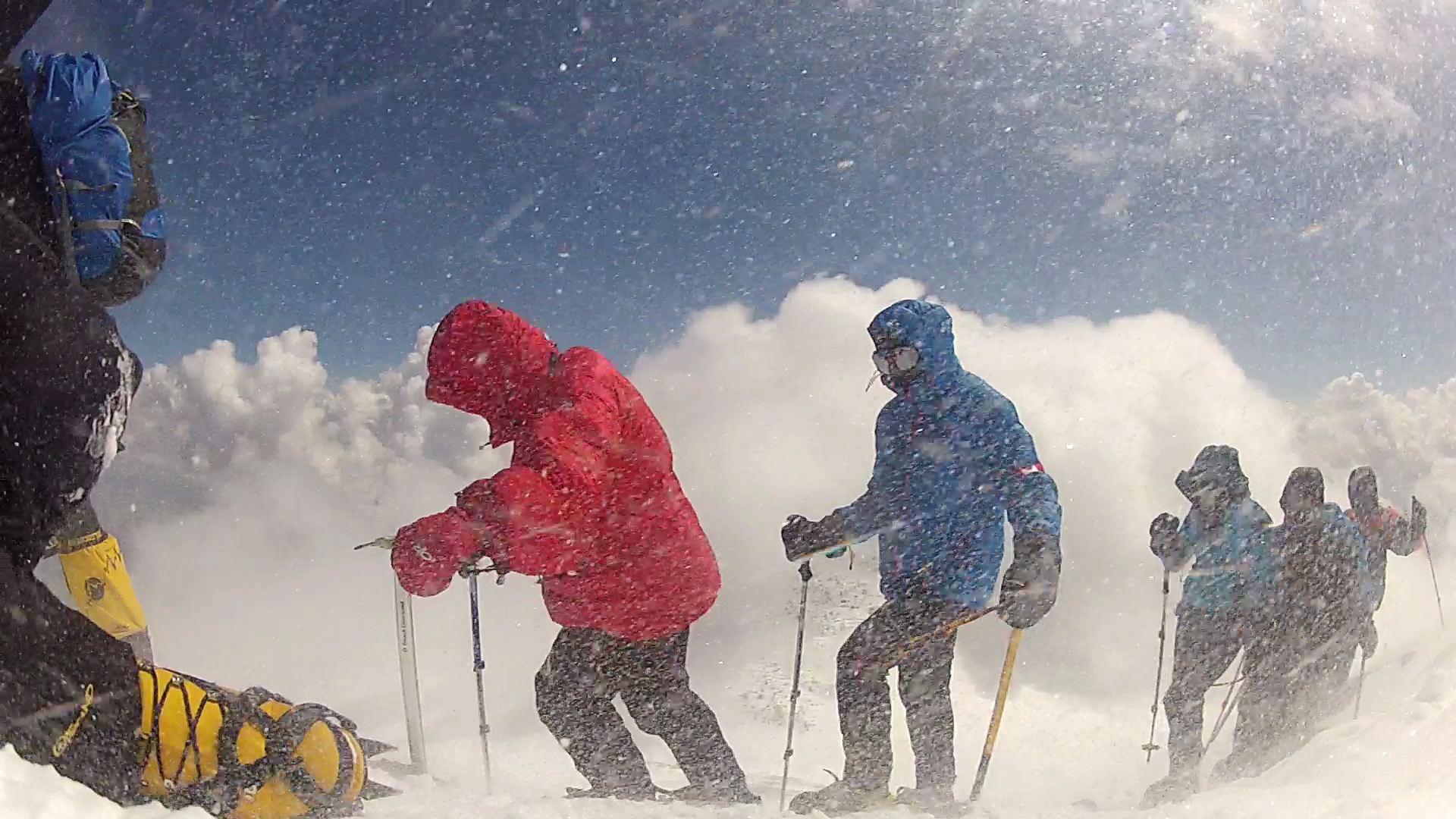
It's extremely difficult under these uncontrollable circumstances because as a one man show you need to: A) Look out for your own health and safety which includes being able to navigate on steep slopes with crampons while ensuring you are strong enough mentally and physically to not succumb to altitude sickness, and B) ensure you shoot as much of the action as possible without falling off the side of the mountain and dying!
I chose the cowboy studio rig because I knew I could leverage and lean on the the icy slopes for added camera stability without worrying too much about wrecking the stabilizing rig. I also knew that the cowboy studio rig could rest on my shoulder which would permit me to remain hands-free to use my ice axe while climbing. The downside to the rig is that because it rests on your chest, and because it's very hard to breathe due to the minimal amount of oxygen, your heavy breathing sometimes translates into unnecessary camera movement. Hence why I leveraged the icy slopes for added stability. Needless to say, I shoot a ton of low angle shots as a result.
The biggest challenge I faced on summit day was the uncontrollable spindrift (blowing snow) and keeping up with the team's pace. You have to remember that no one is willing to stop at any time (as climbing is a race against the weather) so I had to be stronger and faster than everyone else. This is a pure mental game because your body is literally shutting down the higher you climb. Every shot I take, I recalculate the time it will take me to catch up and the amount of energy required to do so. It's a bit crazy and totally run and gun style, but it works if you're fit and healthy, which I usually am. I have 15 years of bodybuilding and fitness training under my belt which gives me a huge advantage.
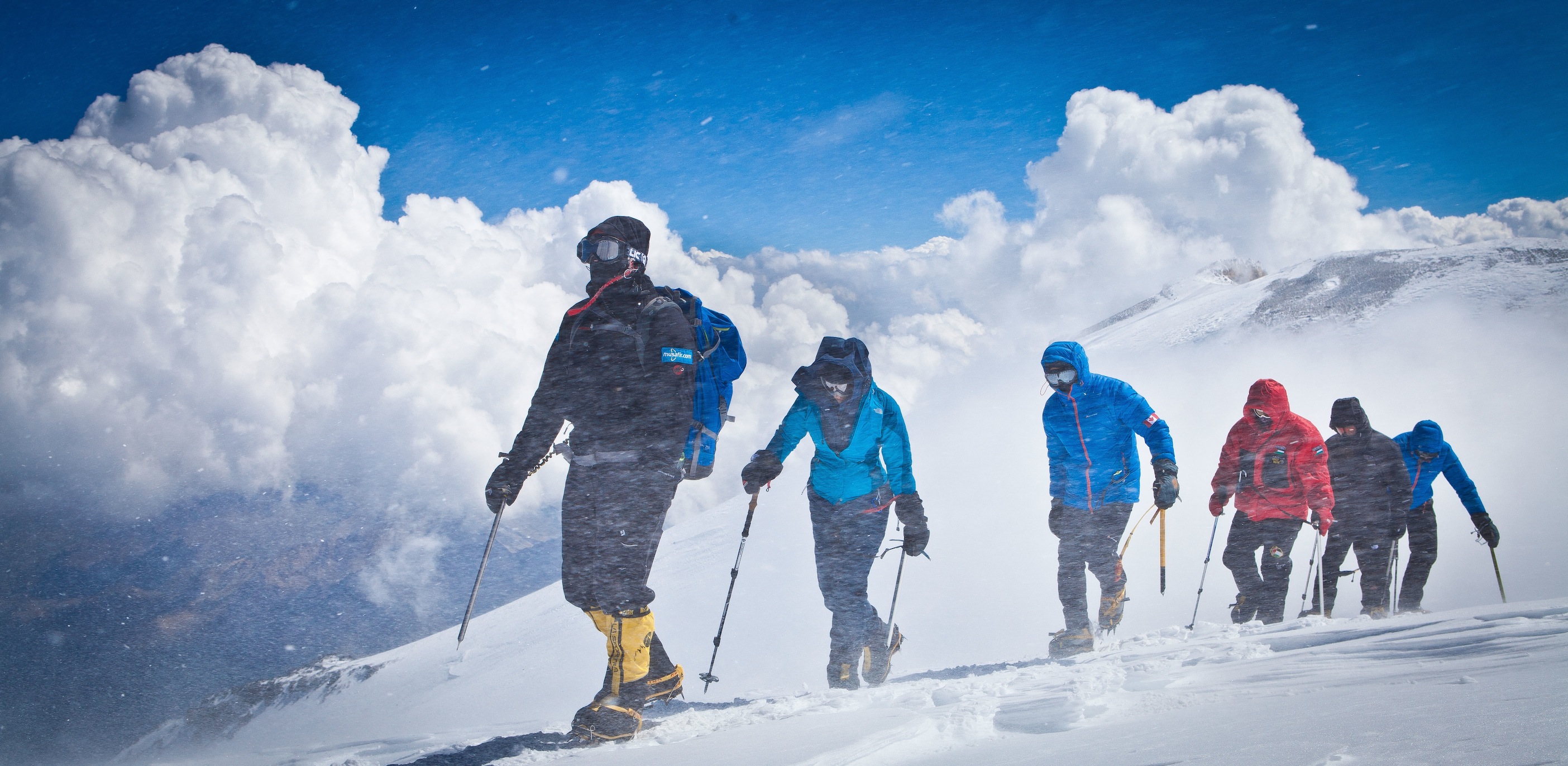
In terms of focus and exposure, that's a whole other challenge in these extreme environments. Climbing above 17,000 feet is definitely one of the instances where "there is more to life than shallow depth of field." I used a vari-ND filter and shot between f/11-f/22, often at higher shutter speeds for effect. When I was getting reactions or ISOs on climbers I would open up to f/4-f/5.6 if it made sense. We're in the mountains, so the background is important. Being closed down also makes focusing easier. Remember, the snow is blowing in all directions and I'm wearing thick gloves. The Kata bag doesn't help much in terms of being able to reach the focus assist or live-mode button, but it does keep the camera intact. Somehow, I manage. Oh ya: The light meter was completely untrustworthy because everything is white, so I had to eye-ball it. Zebras would have been nice here.
As the drama escalates and the weather transitions from bad to worse, I was constantly asking myself: Will we make it? Will we turn back? Can I feel my toes? How are my fingers? Selfishly, I wanted to stand on the summit, but I constantly reminded myself that I was there to follow the team, not to summit the mountain. There was a moment where I asked the team leader whether he thought we were going to make it. He replied "Inshallah." I found that amusing considering Vern is originally from Alaska. It was truly a life or death scenario. Any mistakes by any of the fatigued climbers and they could have easily fallen into the abyss, just like my Canon lens hood! In our guide's 25 ascents of this mountain, this was by far the worst conditions he had ever seen.
150 meters below the summit we decided to take one final rest stop just below an exposed ridge. Rather than shooting, I decided to look after myself. I devoured three Kit-Kat bars, two packs of GU energy gels and consumed a half litre of Gatorade under 90 seconds.Yummy! I was ready for the summit.
The last 150 meters were tough as we climbed directly into the wind towards the top of Mt. Elbrus. I pulled out my GoPro Hero 2 and captured some extreme close ups of the climbers' feet as they marched towards the peak. I then continued to literally run ahead with barely enough time to shoot the first climbers standing on top of Europe.
Most of the team members were huddled on the ground using their ice axes as leverage to avoid getting blown off the mountain. It was slightly chaotic as I tried to orchestrate (while yelling over the raging winds) isolated photographs of each climber and all of their respective summit flags. They lasted minutes on the summit. I had hoped to use my H4N and ME-66 mic to get some quality clips, but no one had the stamina or patience to remain exposed except me.
It was exceptionally emotional on the highest peak in Europe, as many of these team members had never walked in crampons. It was an incredible achievement for them.The highlight was capturing a fiercely determined Saudi Arabian woman's final steps towards the top. What she accomplished that day is unheard of in her society, and it was a privilege to have been able to capture it forever on digital media.
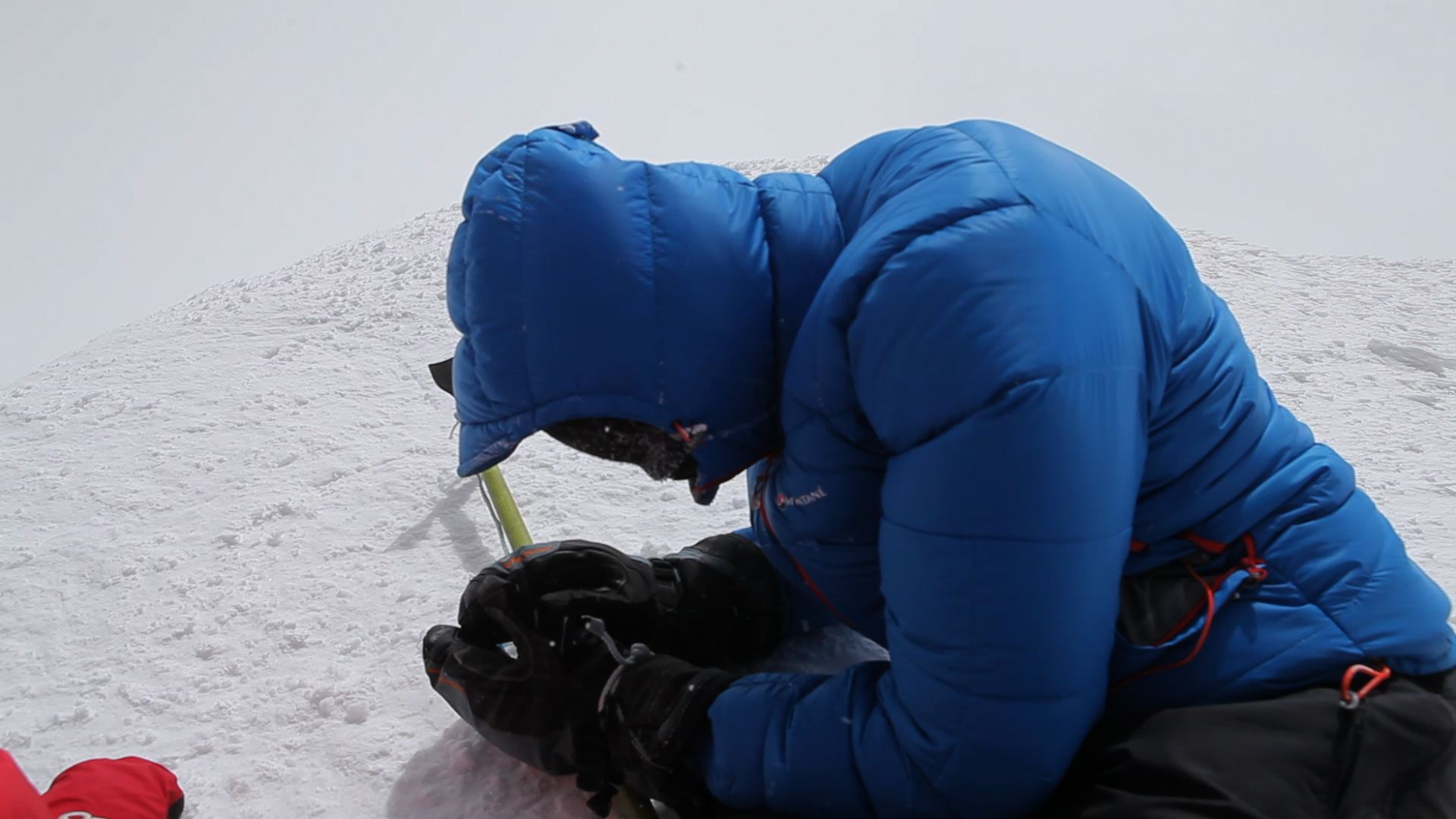
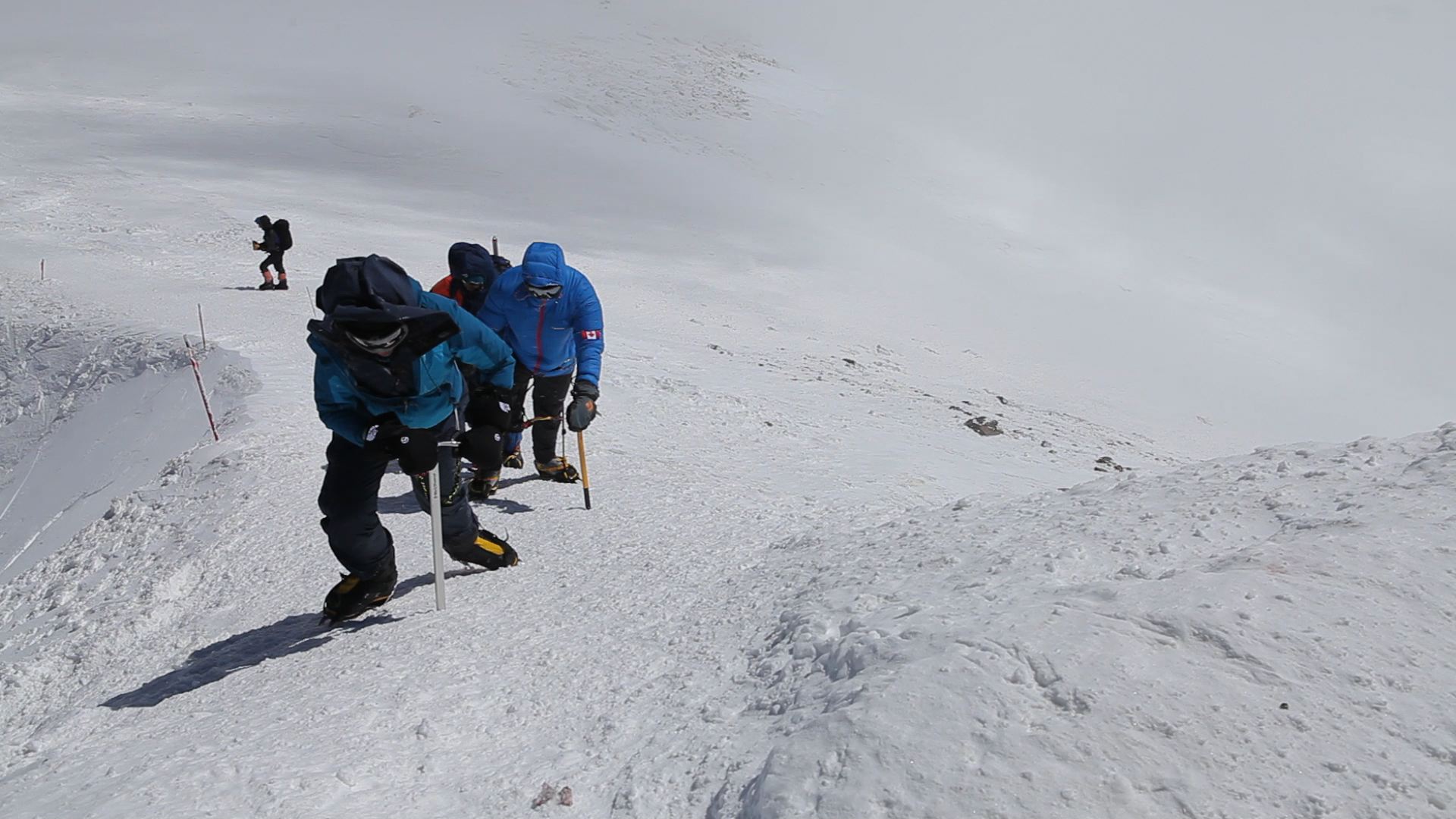
The crazy part of all of this is that once everyone left and I took a few moments for myself on summit, I realized that I was only half way there. I still had to get down.
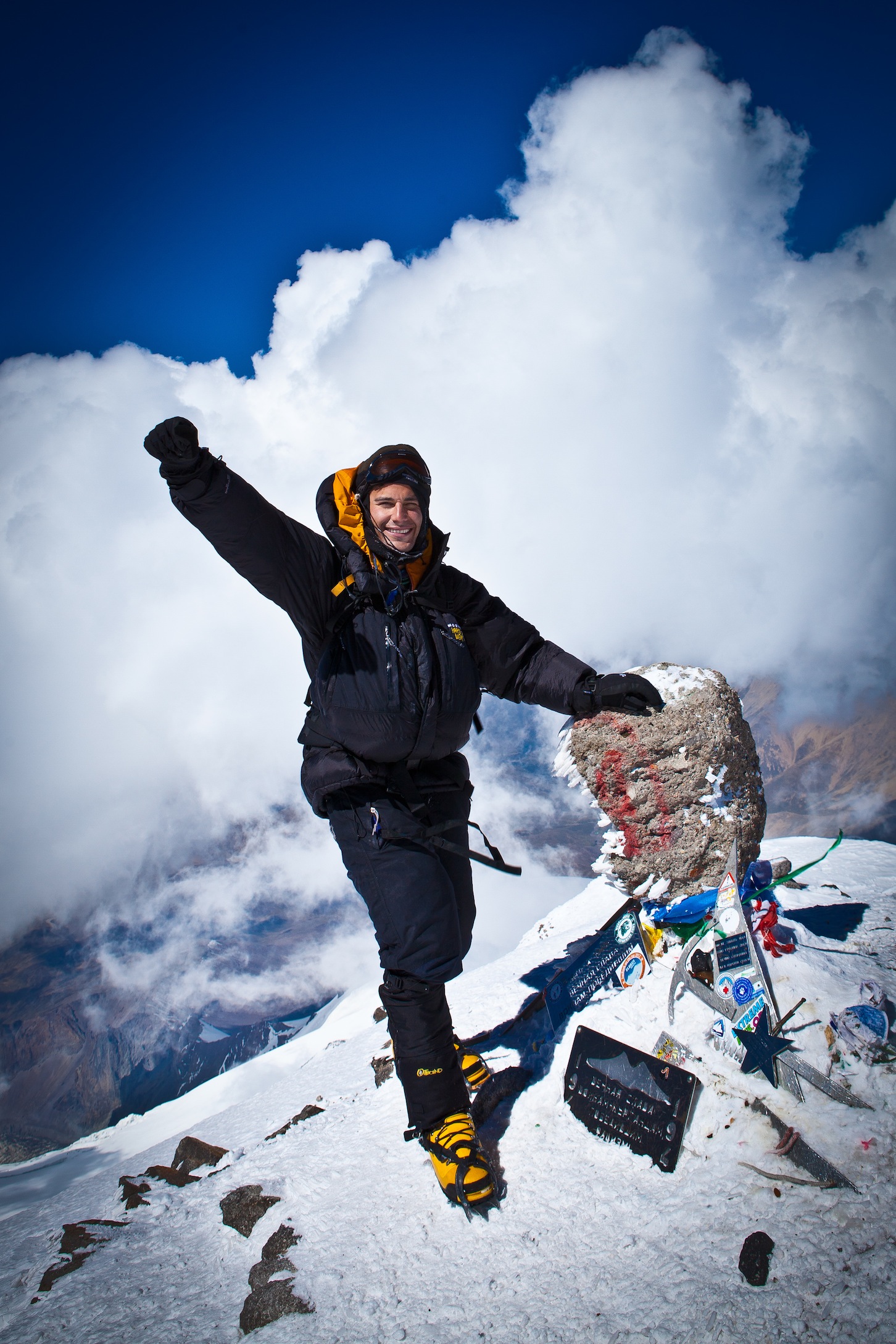
So here I sit in a small hotel in Russia waiting for my flight, using Plural Eyes to sync my interviews waiting for my flight home. A grand adventure, a meaningful story and an epic tale of survival of a team from the Middle East who went against the greatest of odds and triumphed in the end. Am I tired? Exhausted! I'm also extremely grateful. Time for a shot a vodka and Shashlik platter -- Russian style!
The take away message for all of you is that life should be exciting, adventure should exists in all that do, challenge should be embraced, your work should be your passion and it is possible if you believe it.
I'd like to thank Moe Althani and Reach Out to Asia for making me a part of this adventure! We've got a great little film on our hands.
Over and out.